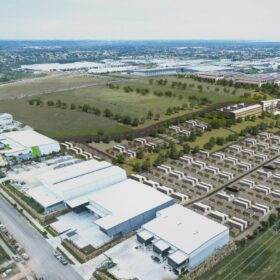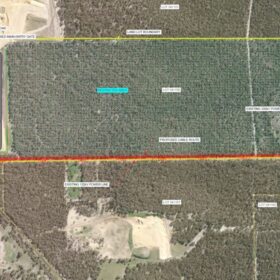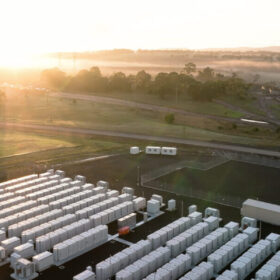Liontown ships first spodumene from Kathleen Valley
Australian battery minerals company Liontown Resources has shipped the first batch of spodumene concentrate from its flagship Kathleen Valley lithium project in Western Australia.
UK developer seeks EPBC approval for 2.5 GWh Victorian battery
Plans to develop a 2.5 GWh battery energy storage system in Victoria’s southwest have joined the queue for assessment under the federal government’s Environment Protection and Biodiversity Conservation Act.
$65 million boost for Queensland long-duration battery manufacturing plant
Australia’s first commercial-scale manufacturing plant for grid-scale, long-duration batteries being built by Energy Storage Industries Asia Pacific has received a $65 million boost through Queensland government and private investment.
Quinbrook picks GE Vernova for 1 GWh Supernode battery stage
Quinbrook Infrastructure Partners has tapped United States-headquartered energy equipment manufacturer GE Vernova to deliver an integrated battery energy storage system solution for the 250 MW / 1,000 MWh second stage of its Supernode project being developed in southeast Queensland.
Trina plans 2,640 MWh big battery for Western Australia
Chinese solar giant Trina Solar has unveiled plans for a 660 MW / 2,640 MWh battery energy storage facility in Western Australia that it says will enhance grid stability and support the state’s increasing renewable energy demands.
Researchers on a roll chasing 30-second perovskite cell annealing time
In a laboratory setting, researchers from two Sydney-based universities are working to dramatically reduce time to anneal pervoskite cells, paving the way to replace toxic disposable battery sensors with a sustainable power source.
Work packages awarded for 48 GWh pumped hydro project
Queensland Hydro has announced more than $190 million in work packages linked to the construction of the 2 GW / 48 GWh Borumba pumped hydro energy storage project being developed near Gympie in the state’s southeast.
COP29 to propose 1.5 TW energy storage target by 2030
This year’s UN Climate Change Conference could adopt a target to increase global energy storage capacity more than sixfold by 2030. To achieve this, the world would need to add more than 158 GW of energy-storage capacity annually.
Factory testing marks milestone for AVL value-adding vision
Australian Vanadium Limited has achieved another milestone in its ‘pit to battery’ strategy with the successful deployment of its vanadium electrolyte in a 78 kW / 220 kWh flow battery.
New report highlights value of long-duration storage
State and federal governments are being urged to ramp up deployment of long-duration energy storage after a new report found significant capacity additions would result in 38% lower system costs than alternatives while playing a critical role in maintaining reliability as coal plants retire over the next decade.















